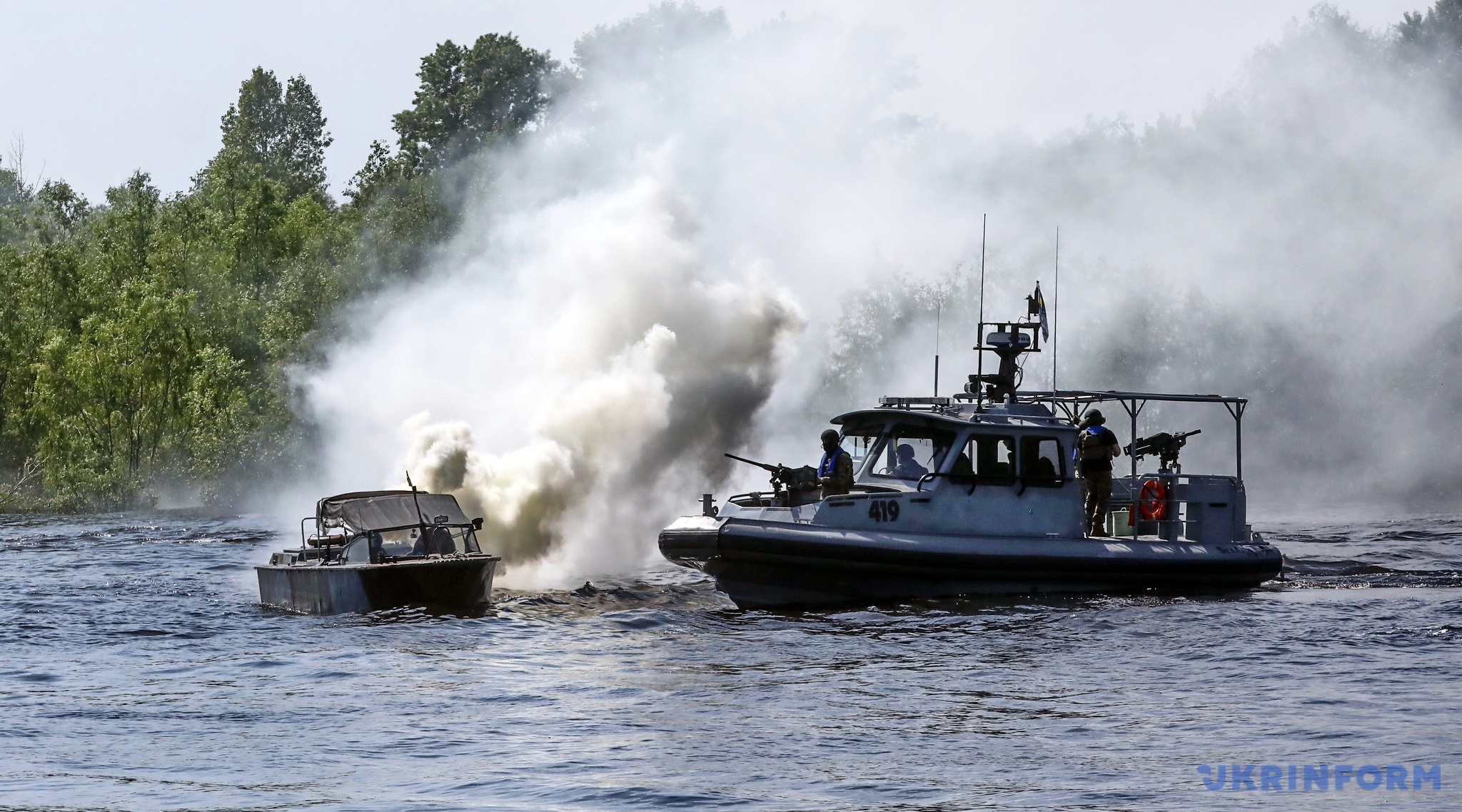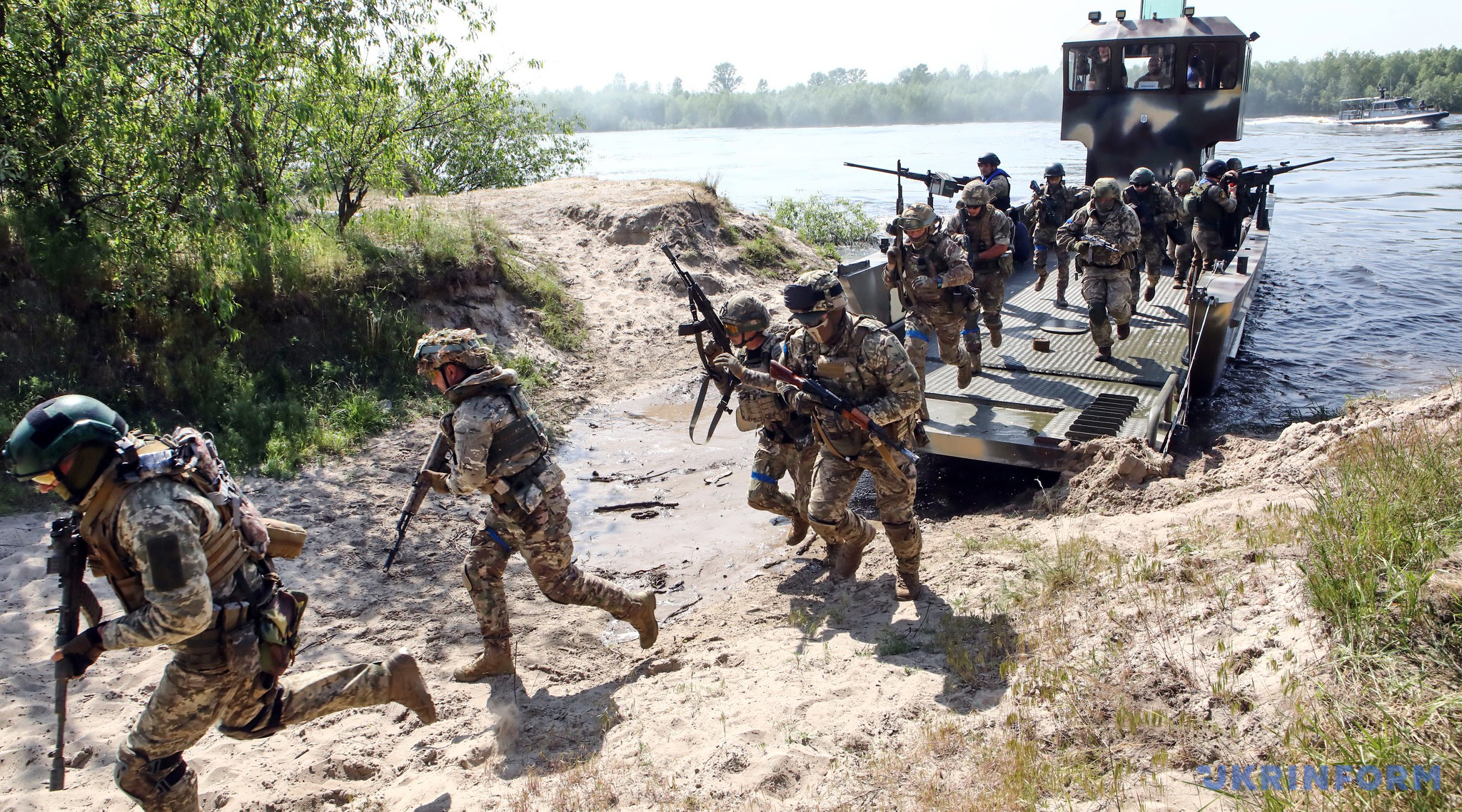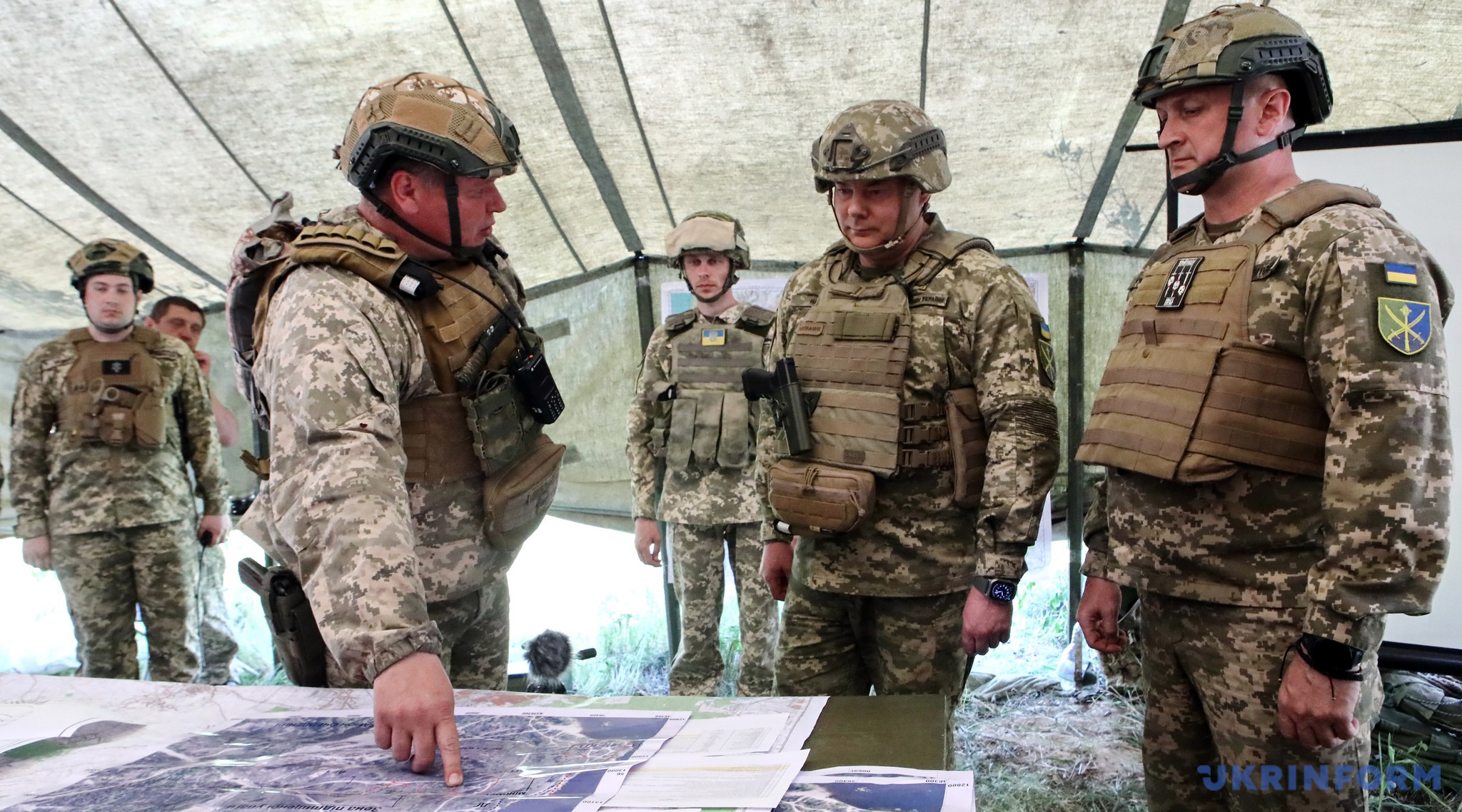For the first time in history, the world is watching the war in Ukraine online, but it is also extremely important to understand what is happening behind the scenes. It is clear that during the war, commanders have no time to communicate with the press, so they have to gather information bit by bit at training grounds and during exercises.
We asked Lieutenant General Serhiy Nayev, Commander of the Joint Forces of the Armed Forces of Ukraine, who is responsible for the Northern Operational Zone, about what is happening in the northern direction, how many Russians are concentrated in Belarus and what is available at Belarusian airfields, what foreign weapons and equipment have already been mastered by the Ukrainian military.
- Mr. Sergiy, everyone is sympathetic to the limited amount of information that can be provided now, but we would like to hear about the situation in your area of responsibility.
- The security situation remains under control. At the same time, on the night of May 16, the enemy launched an unprecedented missile attack on our capital, which, according to our estimates, was aimed at destroying the air defense system and disrupting the control system.
In addition, as you can see, the enemy continues to systematically shell the border areas of Sumy and Chernihiv regions. However, due to the decrease in ammunition, the enemy's military command continues to search for the most effective tactics to defeat our units and infrastructure. Thus, for the first time in recent times, there have been cases of the use of "Shahed" kamikaze drones to hit control points and places of concentration of our units deep in the border zone.

- Today [the interview was recorded on May 18], for the first time in Kyiv region, under your leadership, the Military Riverine Division and units of the Territorial Defense Forces, which are part of the troops of the Northern Operational Zone, practiced exercises to destroy enemy sabotage and reconnaissance groups. What is unique about these exercises?
- Indeed, today we practiced the joint execution of tasks by the Military Riverine Division and the Territorial Defense Forces, which, according to legend, were supposed to detect, localize, block and destroy the enemy subversive reconnaissance group. The Military Riverine Division, whose work you saw, was created in March last year. It is a part of the forces and means engaged in the defense of Kyiv region and our capital. We are now armed with both boats that were transferred at the beginning of the full-scale invasion and modern boats that were recently transferred by the United States. This is very important for patrolling the Dnipro River to prevent any manifestations of the enemy's sabotage and reconnaissance activities. So far, no such thing has been noticed, but we must be prepared for any scenario and train constantly.
IN BELARUS, RUSSIAN MOBILIZED SOLDIERS ARE TRAINED FOR UP TO 2 MONTHS
- How many Russian and Belarusian troops and equipment are currently stationed near the Ukrainian border? How often does the rotation of Russian mobilized soldiers undergoing training in Belarus take place? Can we say that their quantitative and qualitative composition has changed?
- Today, there are no signs of the formation of ground strike groups on the territory of Belarus and Russia. However, the enemy continues to engage two state border cover groups deployed in the southern part of Belarus and in the Bryansk, Kursk and Belgorod regions of Russia, with a total strength of about 18,000 people. Airplanes and helicopters of the Russian Aerospace Forces continue to be stationed at the airfields of Belarus, and they continue to perform reconnaissance tasks and demonstrate readiness to use them on the Ukrainian direction.
As for the Russian contingent of the Regional Grouping of Troops in Belarus, its main part has been moved to Rostov region after training and is already engaged in combat operations in the east of our country in Donetsk region. In general, the training cycle of Russian units, which are fully staffed with mobilized personnel, lasts up to two months.
- The Russian planes that bombed Ukraine used Belarusian airfields for some time. In your opinion, why are there practically no takeoffs of airplanes and drones from the territory of Belarus now?
- They don't fly because after the unsuccessful invasion of the Russian army from the territory of Belarus, and subsequent failures in our east and south, the Belarusian leadership limited its cooperation with Russia to the supply of weapons, ammunition, and the provision of training grounds for mobilized soldiers.
However, we should not forget that in December 1999, Russia and Belarus signed an agreement on the creation of a "Union State" aimed at uniting both countries. In order to test the possibility of joint use of the Russian and Belarusian air forces, joint patrols of its airspace were conducted, including to show NATO countries that they were ready to respond.
Until April 6 this year, three MiG-31K aircraft carrying "Kinzhal" air defense missiles were stationed in Belarus. Currently, there are still 13 aircraft in Belarus: Su-34 - 8 units, Su-30SM - 3 units, Su-24MR - 2 units. We also observe 12 Mi-8, Mi-24, and Mi-28N helicopters of the Russian Aerospace Forces there.

WE HAVE CALCULATED ALL POSSIBLE OPTIONS FOR THE ENEMY'S ACTIONS IN THE NORTH
- Now there is renewed talk about the prospects of Belarus getting involved in the war in Ukraine due to Lukashenko's unstable health. How do you assess the preparation of Ukrainian defenders from the north to meet the enemy, if necessary?
- As of today, the "cooperation" of the Russians and Belarusians is limited to comprehensive support of the defense industry and the groups of troops of the Russian Armed Forces that provide and conduct combat operations on the territory of Ukraine.
At the same time, we have calculated all possible options for the enemy's actions, considered all scenarios, including the most threatening ones, and are taking the necessary measures. In particular, our defense forces have created quite powerful groups, planned and prepared for use appropriate reserves, constantly monitor the situation, including through information provided by partner countries, the Security Service of Ukraine, in cooperation with the Armed Forces of Ukraine and other components of the security and defense forces, conduct counterintelligence and anti-terrorist measures to identify and neutralize terrorist (sabotage) threats, and in cooperation with the Air Force we provide cover for troops and aircraft.
In addition, the rearmament of the troops with more modern foreign-made models continues, including air defense systems. We have prepared and are constantly improving long-term fortifications in the border areas, brought the density of mines in the border areas to the appropriate standards, and continue to build up the system of mine and non-explosive barriers in the depths of defense, planned and ready for destruction of relevant facilities that will make it impossible for enemy troops to advance deeper into our territory.
It's also no secret that our units continue to train quite actively at military training grounds and in partner countries, including mastering new modern weapons.
As you can see, we are not resting on our laurels and continue to work on this. The level of manning and equipment, as well as the moral and psychological state of the personnel, fully ensure the readiness of the Defense Forces for active combat operations in the northern direction.

- Do you follow the statements of the Belarusian General Staff and have you noticed any recent changes in their rhetoric?
- Yes, of course, we follow the statements of the General Staff of the Republic of Belarus and note a certain change in rhetoric, primarily due to the lack of success of Russia in the war with Ukraine and the corresponding consolidation of the Western world.
THE PERIOD FOR OUR MILITARY TO MASTER THE WEAPONS AND MILITARY EQUIPMENT LASTS FROM 2 WEEKS TO 2 MONTHS
- Coming back to the training of our Defense Forces, what tasks do you set for your subordinates now? How fast is the assimilation of new equipment and weapons that have now begun to arrive in Ukraine's units from the West?
- The main task for us today is to ensure readiness to perform tasks, which means training personnel, coordinating units and controlling the restoration of combat capability of subordinate military units.
New models of weapons that our soldiers receive from partner countries, such as portable anti-aircraft systems and anti-tank missile systems, are mastered by our soldiers in about two weeks. For heavy weapons, the training period is up to two months. I would like to note that our guys are very interested in studying the latest weapons and equipment, which significantly reduces the training time. Our military also undergo training on foreign equipment in partner countries, which lasts an average of one month.
- Earlier it was reported that Ukraine had received about 600 types of weapons and equipment from its Western partners. What percentage of this figure is currently being mastered by your subordinates?
- Yes, today my troops have almost the entire range of small arms and close combat weapons, such as the 5.56 mm MSBS "Grot" assault rifle, 5.56 mm M4A1 carbine, 7.62 mm FN FAL rifle, 7.62 mm M240 machine gun, 7.62 mm MG-42/59 machine gun, 12.7 mm BrowningM2 machine gun, 40 mm Mk19 grenade launcher. Among the anti-tank weapons (ATGMs and hand-held anti-tank grenade launchers), I can name Javelin and Milan ATGMs, Panzerfaust 3, Carl Gustaf, M79 OSA, SMAV Mk/153 grenade launchers, NLAW, AT-4, and PSKOTT disposable grenade launchers.
In addition, we have artillery systems (155-mm PZ2000, FN-70, TRF-1) and mortars of all calibers (60 mm, 82 mm, 120 mm), practically all air defense systems from MANPADS to SAMs, armored vehicles such as M113 BMPs, special armored vehicles such as HMMWV, MaxPro, Rostel Senator, and others. And, of course, we work with unmanned aerial vehicles received from partner countries. Taking into account the above, the total percentage of weapons and military equipment from the entire nomenclature mastered by subordinate personnel is 40%, and in some nomenclatures - up to 100%. We are doing everything possible to maximize this percentage in all areas, as the transferred weapons have shown high efficiency in combat use in repelling the armed aggression of the Russian Federation.

COMMUNICATION WITH INTERNATIONAL PARTNERS IS NOW ONGOING AND IN VARIOUS FORMATS
- How often do you communicate with your colleagues from partner countries? What are they most interested in and do they help you solve practical problems before the counteroffensive?
- You know, the Joint Forces Command of the Armed Forces of Ukraine has established friendly, equal and mutually beneficial relations with the relevant military authorities of the armed forces of partner countries, such as the United States, Great Britain, Canada, the Republic of Poland and others, at the stage of formation, training and achievement of operational capabilities. Since the beginning of the full-scale armed aggression, these relations have reached a new, so to speak, fraternal level. We receive tremendous support and assistance from our partners in the fight against the enemy.
We communicate with our foreign partners on an ongoing basis in various forms. We discuss the operational situation, prospects for cooperation, and coordinate the provision of logistical and advisory assistance.
Despite the difficult security situation, foreign delegations continue to visit the Joint Forces Command. Thus, in mid-April, I had the honor to hold a working meeting with the Commander Canadian Joint Operations Command (CJOC), Vice Admiral Bob Auchterlonie. I briefed my Canadian colleague on the operational situation at the front, familiarized him with the tasks of the Command during a full-scale aggression, discussed cooperation with representatives of Armed Forces of Canada training missions and obtaining advisory assistance to the Command to strengthen the necessary capabilities.
Periodically, approximately once a month, telephone conversations and videoconference communications are held with the heads of military authorities of strategic partner countries - the U.S. Army Europe Command, the Command of the Operational Command of the Armed Forces of the Republic of Poland. At the suggestion of Lieutenant General Piotrowski [Commander of the Operational Command of the Armed Forces of the Republic of Poland, Lieutenant General Tomasz Piotrowski], the issue of sending officers of the Joint Forces Command of the Armed Forces of Ukraine to the Republic of Poland to study at professional courses in shortage specialties is being considered.
We also invite officers of the military and diplomatic missions of partner countries accredited in Ukraine to participate in the training of the Defense Forces conducted by the Joint Forces Command. For example, in February this year, representatives of the Kyiv Association of Military Attaches (KAMA) visited one of the Armed Forces training grounds, where they were shown a battalion training with live fire, as well as samples of foreign-made weapons and military equipment that were transferred to us before the start of Russia's large-scale aggression against Ukraine.
OUR MOBILE AIR DEFENSE GROUPS OPERATE IN DIFFERENT AREAS
- You recently spoke about the echeloned air defense of the capital and the new mobile air defense groups. Will these mobile groups be on combat duty only near Kyiv or will they be used in different parts of the frontline?
- You see, the task of maneuverable fire groups is not only to ensure air defense of Kyiv. Undoubtedly, they are also used in other areas in the operational zone of subordinate troop groups. Their purpose is to increase the effectiveness of air cover in destroying enemy air attack assets - airplanes, cruise missiles, UAVs - in threatened areas. The maneuverable fire groups are also used to provide air cover for critical infrastructure facilities and during troop movement. With the help of the Commander-in-Chief of the Armed Forces of Ukraine, partner countries and volunteers, we have provided maneuverable firing groups with off-road vehicles. This allows us to respond quickly to threats.
Iryna Kozhukhar
Photo: Volodymyr Tarasov, Ruslan Kanyuka
